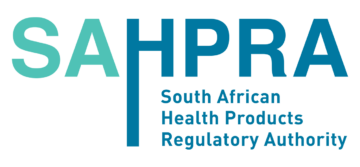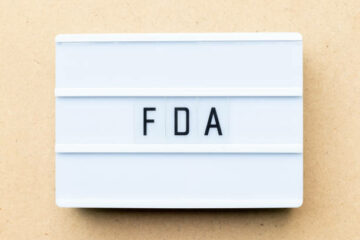The article highlights the key points related to the responsibilities of persons using healthcare products in the context of reporting adverse reactions thereto.

Table of content
The article highlights the key points related to the responsibilities of persons using healthcare products in the context of reporting adverse reactions thereto.
The Egyptian Drug Authority (EDA), the country’s regulatory agency in the sphere of healthcare products, has published a guidance document dedicated to detecting and reporting adverse reactions to drugs and medical devices.
The document provides an overview of the applicable regulatory requirements, as well as additional clarifications and recommendations to be taken into consideration by manufacturers, distributors, and other parties involved in order to ensure continuous safety of healthcare products allowed for marketing and use in the country.
The authority also reserves the right to make changes to the guidance, should such changes be reasonably necessary to reflect corresponding amendments to the underlying legislation.
The scope of the guidance covers, inter alia, the aspects related to the responsibilities of users.
User Responsibilities within the Vigilance System
First of all, the authority emphasizes that the Vigilance System, designed to monitor and address potential issues with medical devices, heavily relies on the active participation of users. According to the guidance, this includes:
- Incident Notification: Users are the primary informants of any suspected incidents with medical devices. Their real-time experience provides valuable insights that manufacturers might not be aware of.
- Implementation of FSCAs: Field Safety Corrective Actions (FSCAs) are corrective measures taken to address issues with medical devices. Users, being the primary operators of these devices, play a crucial role in the successful implementation of these actions.
Thus, according to the document, building a strong relationship between the manufacturer and the user is essential to foster increased user involvement.
The Medical Device Safety Unit (MDSU) further plays a supportive role by offering guidance that supports user participation.

Detailed Adverse Incident Reporting Guidance
The document further provides detailed guidelines on incident reporting to be followed in order to ensure adverse events are duly notified.
An adverse incident is any event where a medical device could potentially, or has, caused harm, including a serious health issue. Such incidents necessitate prompt reporting to the MDSU/EDA.
The key aspects of this reporting process include:
- What to Report: Only incidents that align with specific criteria laid out in this guideline should be communicated. This ensures that critical issues are prioritized.
- Who Should Report: The MDSU/EDA promotes a culture of safety by encouraging a wide range of individuals, from users to healthcare professionals, to report any safety concerns. This inclusive approach ensures a broader surveillance of potential issues.
- When to Report: According to the guidance, timelines are vitally important. Thus, the authority explicitly states that while detailed reports are preferred, immediacy should take precedence over completeness, especially in cases with serious adverse events.
- How to Report: The “USER Reporting Form – The Pink Card” standardizes the reporting process. This structured approach ensures that all necessary details are captured consistently.
- Device Handling Post-Incident: According to the document, it is necessary to preserve the device’s state post-incident. Immediate actions like repairs could impact evidence. Following specific guidelines for returning devices ensures safety and compliance.
- Further Information: As investigations progress, new information might become available. Users are expected to continually communicate any new findings, especially if they pertain to patient outcomes.
Field Safety Corrective Actions (FSCA) Guidance
The document also provides general guidelines on field safety corrective actions in the part they apply to users.
In accordance with the applicable legislation, FSCAs are remedial actions initiated by manufacturers to address risks associated with devices already in circulation. These actions can vary significantly, including:
- Device Alterations: This could involve physical changes like repairing or replacing or informational changes such as relabeling.
- Guidance: Manufacturers might issue specific instructions on how a device should be used or how users should monitor patients.
Conclusion
In summary, the present EDA guidance describes in detail the approach to be applied by users with respect to various regulatory procedures associated with reporting adverse events and mitigating consequences thereof.
The document provides precise guidelines users should follow to a letter in order to ensure the safety, as well as proper communication of information related to the respective issues.
How Can RegDesk Help?
RegDesk is a holistic Regulatory Information Management System that provides medical device and pharma companies with regulatory intelligence for over 120 markets worldwide. It can help you prepare and publish global applications, manage standards, run change assessments, and obtain real-time alerts on regulatory changes through a centralized platform. Our clients also have access to our network of over 4000 compliance experts worldwide to obtain verification on critical questions. Global expansion has never been this simple.
Want to know more about our solutions? Speak to a RegDesk Expert today!
–>
- SEO Powered Content & PR Distribution. Get Amplified Today.
- PlatoData.Network Vertical Generative Ai. Empower Yourself. Access Here.
- PlatoAiStream. Web3 Intelligence. Knowledge Amplified. Access Here.
- PlatoESG. Carbon, CleanTech, Energy, Environment, Solar, Waste Management. Access Here.
- PlatoHealth. Biotech and Clinical Trials Intelligence. Access Here.
- Source: https://www.regdesk.co/eda-guidance-on-reporting-adverse-reactions-responsibilities-of-users/
- :has
- :is
- :not
- :where
- 1
- 120
- a
- About
- access
- accordance
- According
- actions
- active
- Additional
- address
- adverse
- agency
- Alerts
- align
- All
- allowed
- already
- also
- amendments
- an
- and
- any
- applicable
- applications
- applied
- Apply
- approach
- ARE
- article
- AS
- aspects
- assessments
- associated
- authority
- available
- aware
- BE
- become
- been
- being
- between
- broader
- Building
- by
- CAN
- captured
- cases
- caused
- centralized
- change
- Changes
- Circulation
- clients
- communicate
- Communication
- Companies
- compliance
- concepts
- Concerns
- conclusion
- Consequences
- consideration
- consistently
- context
- continually
- continuous
- Corresponding
- could
- country
- country’s
- covers
- criteria
- critical
- crucial
- Culture
- dedicated
- definitions
- designed
- detail
- detailed
- details
- device
- Devices
- distributors
- document
- drug
- Drugs
- Egypt
- emphasizes
- encouraging
- enhancements
- ensure
- ensures
- especially
- essential
- Event
- events
- evidence
- expansion
- expected
- experience
- expert
- experts
- explicitly
- fda
- field
- findings
- follow
- followed
- following
- For
- form
- Foster
- from
- further
- General
- Global
- global expansion
- guidance
- guidelines
- Handling
- harm
- Have
- Health
- healthcare
- heavily
- help
- highlights
- holistic
- How
- HTTPS
- if
- immediate
- Impact
- implementation
- important
- in
- incident
- incidents
- include
- includes
- Including
- Inclusive
- increased
- individuals
- information
- Informational
- initiated
- insights
- instructions
- Intelligence
- into
- Investigations
- involve
- involved
- involvement
- issue
- issues
- IT
- jpg
- Key
- Know
- Legacy
- Legislation
- letter
- like
- make
- manage
- management
- management system
- Manufacturer
- Manufacturers
- Marketing
- Markets
- max-width
- MDR
- measures
- medical
- medical device
- medical devices
- might
- mitigating
- Monitor
- more
- necessary
- network
- never
- New
- obtain
- of
- offering
- on
- only
- operators
- or
- order
- Other
- our
- out
- outcomes
- over
- overview
- part
- participation
- parties
- patient
- patients
- persons
- Pharma
- physical
- pink
- platform
- plato
- Plato Data Intelligence
- PlatoData
- Play
- plays
- points
- potential
- potentially
- precedence
- precise
- preferred
- Prepare
- present
- primary
- prioritized
- procedures
- process
- Products
- professionals
- Progress
- promotes
- proper
- provides
- publish
- published
- Questions
- range
- reactions
- real-time
- recommendations
- reflect
- regulatory
- related
- relationship
- repairing
- repairs
- report
- Reporting
- Reports
- Requirements
- reserves
- respect
- respective
- responsibilities
- returning
- right
- risks
- Role
- Run
- Safety
- scope
- serious
- should
- significantly
- Simple
- Solutions
- Source
- speak
- specific
- Sponsored
- standards
- State
- States
- strong
- structured
- successful
- such
- SUMMARY
- supportive
- Supports
- surveillance
- suspected
- system
- Take
- taken
- that
- The
- their
- These
- they
- this
- Through
- Thus
- timelines
- to
- under
- underlying
- unit
- use
- used
- User
- users
- using
- Valuable
- various
- vary
- Verification
- vigilance
- want
- WELL
- while
- wide
- Wide range
- with
- within
- worldwide
- you
- zephyrnet












